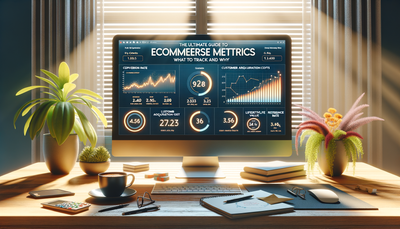Creating a Press or Media Page for Your Business Website
A dedicated press or media page on your business website can be a powerful tool for enhancing your company's visibility and credibility. This article explores the importance of having a well-structured press page and provides guidance on creating one that effectively serves both journalists and your business. We'll discuss the key elements to include, how to organize the information, and strategies for making your press page easily discoverable. By implementing these best practices, you can create a press page that not only attracts media attention but also strengthens your brand's reputation and facilitates better communication with the press.Table of Contents:

The Importance of a Press Page
A press or media page serves as a centralized hub for journalists, bloggers, and other media professionals to access information about your company. It's an essential component of your online presence that can significantly impact your business's public relations efforts. A well-designed press page can:1. Increase media coverage by providing easy access to company information
2. Enhance credibility by showcasing past media mentions and awards
3. Control your narrative by offering approved company information and assets
4. Save time by reducing direct inquiries from journalists
5. Improve search engine visibility for brand-related queries
By investing time in creating a comprehensive press page, you're laying the groundwork for stronger media relationships and more effective brand communication.
Do you need a website? Want to build a website but don't know where to start? Our website builder is the perfect solution. Easy to use, and with the ability to customize to fit your business needs, you can have a professional website in no time.
Key Elements to Include on Your Press Page
To create an effective press page, consider including the following essential elements:1. Company Overview: A brief description of your business, its mission, and key differentiators
2. Press Releases: Recent and archived press releases about company news and developments
3. Media Kit: Downloadable package containing logos, high-resolution images, and company fact sheets
4. Executive Bios: Short biographies and high-quality headshots of key company leaders
5. Contact Information: Clear details on how media can reach your PR team or spokesperson
6. Media Mentions: Links to recent articles or features about your company in the press
7. Awards and Recognitions: Highlights of any industry awards or notable achievements
8. Multimedia Gallery: Videos, infographics, or other visual assets relevant to your brand
9. FAQs: Answers to common questions journalists might ask about your company
By including these elements, you'll provide a comprehensive resource for journalists and increase the likelihood of accurate and positive media coverage.
Structuring Your Press Page for Easy Navigation
The organization of your press page is crucial for ensuring that visitors can quickly find the information they need. Consider the following tips for structuring your page:1. Use clear headings and subheadings to separate different types of content
2. Implement a search function to allow users to find specific information easily
3. Organize press releases and media mentions chronologically, with the most recent items at the top
4. Create a sidebar or menu with quick links to the most important sections
5. Use dropdown menus or accordions to keep the page clean while providing access to detailed information
6. Ensure that all downloadable content is clearly labeled and easily accessible
7. Implement a responsive design to ensure the page is mobile-friendly
A well-structured press page will save time for both journalists and your PR team, leading to more efficient communication and potentially increased media coverage.
Building a website with SITE123 is easy
Making Your Press Page Discoverable
Creating a great press page is only half the battle; you also need to ensure that it's easily discoverable by journalists and search engines. Here are some strategies to improve the visibility of your press page:1. Include a clear link to the press page in your website's main navigation or footer
2. Use descriptive, keyword-rich titles and meta descriptions for your press page and its contents
3. Submit your press releases to online distribution services to increase their reach
4. Share your press page link on your social media profiles and in your email signatures
5. Include internal links to your press page from relevant blog posts or other content on your site
6. Optimize images and other media on the page with appropriate alt text and file names
7. Regularly update your press page with fresh content to encourage repeat visits and improve search rankings
By implementing these tactics, you'll increase the chances of journalists finding your press page when researching your company or industry.
Leveraging Your Press Page for Brand Building
Your press page can do more than just provide information to journalists; it can also be a powerful tool for building and reinforcing your brand. Consider these strategies:1. Highlight your company's unique story and values through carefully crafted content
2. Use consistent branding elements, including colors, fonts, and imagery, throughout the page
3. Showcase customer testimonials or case studies to demonstrate your company's impact
4. Feature thought leadership content, such as whitepapers or industry reports, to position your company as an expert in your field
5. Include links to your company's social media profiles to encourage engagement across platforms
6. Regularly update your press page with new achievements, milestones, and company news
7. Consider adding a blog section or news feed to keep the content fresh and engaging
By treating your press page as an extension of your overall brand strategy, you can create a powerful asset that serves both media professionals and potential customers.





